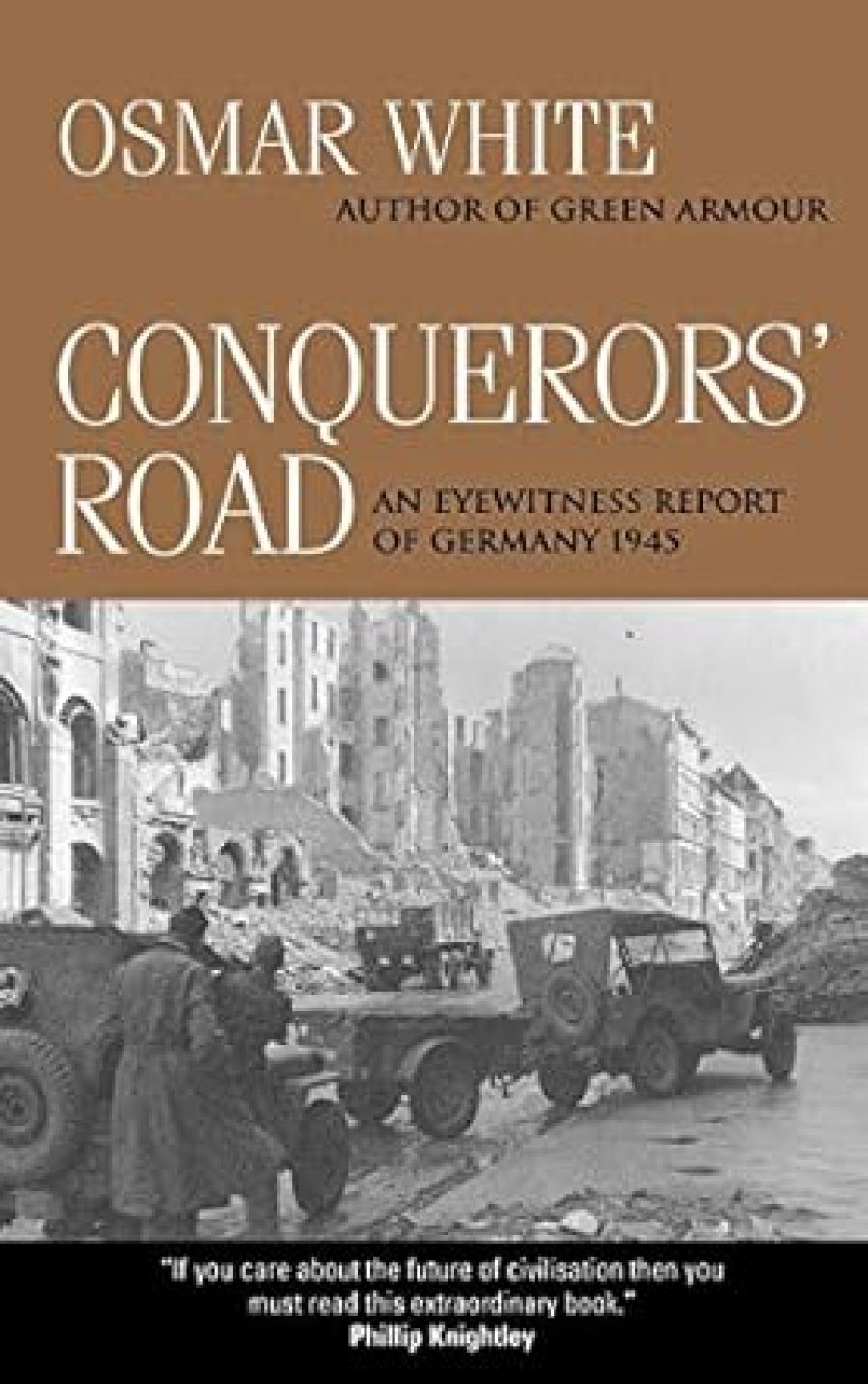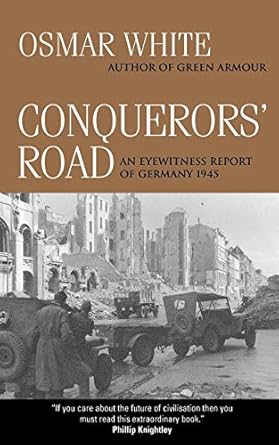
- Free Article: No
- Contents Category: Journalism
- Review Article: Yes
- Article Title: A Bruised Universe
- Online Only: No
- Custom Highlight Text:
Now that the generals have announced the end of the military campaign in Iraq, media organisations will conduct their own post-mortems. Pundits and politicians agree that the war was the most televised in recent history, but what does that mean in terms of quality journalism? One of the most surprising aspects of the rolling, often repetitious, coverage was the way that basic tenets of journalism were proven true: that is, good reporting is based on firsthand observation and powerfully evoked detail. No amount of studio analysis can equal a journalist – notebook or microphone in hand – speaking to people on the streets. The journalism of Osmar White, the noted Australian war correspondent, exemplifies this.
- Book 1 Title: Conquerors’ Road
- Book 1 Subtitle: An eyewitness report of Germany 1945
- Book 1 Biblio: CUP, $29.95 pb, 222 pp
- Book 1 Cover Small (400 x 600):

- Book 1 Cover (800 x 1200):

Reading White’s 1945 eyewitness report of Germany’s collapse, Conquerors’ Road, is an uncanny experience in the way it offers up parallels with the Iraq war. Before the Allied invasion, for example, experts said the Germans would wage a guerrilla war against the invading armies, but nothing happened. ‘The enemy no longer had the will to fight on,’ White notes. ‘They submitted to the authority of the invaders without question or protest.’ White offers an explanation:
Far from creating a race of ‘Supermen’ the Führer’s system of eliminating all opposition by keeping everybody with a pistol pointed at everybody else, had excised all real courage from the character of his people.
In February 1945 Osmar White joined the US 12th Army Group on the Western Front and travelled with them through Germany, all the while filing reports for Australian newspapers. He wrote about uncovering horrors at Buchenwald and post-surrender Berlin, where people survived on ‘acorn coffee, gut schnapps [and] watered wine’.
For those interested in military history, there is a lot to appreciate here, in particular the portraits of the war’s key players. General Patton, for example, possessed strategic brilliance alongside a ‘childish love of notoriety … foul mouth [and] preoccupation at his periodical press briefings with corpses’. (It pained White to admit that, despite his personal dislike for Patton, his type was necessary for military success. He also noted the animosity of Patton’s staff towards General Montgomery, who, they said, was ‘determined to hog the limelight’.)
In the preface to his celebrated account of the New Guinea campaign, Green Armour, White stated that the book was written ‘from the viewpoint of a man looking from the inside out, rather than from the outside in – a viewpoint that lends itself easily to a distortion of perspective’. It is true that Conquerors’ Road has a ragged quality, as it consists of vignettes and brief encounters, but this only increases the work’s power. White is our point of reference. We perceive the bruised moral universe – a place where a liberated concentration camp becomes a brothel and US commanders joke about their soldiers’ rape of German women – through his eyes and ears. White points out that Conquerors’ Road was written by a ‘bystander who by choice looked out over the killing fields at ground level … [a] chronicle by a licensed observer of a great triumph and a great tragedy’. It is rare, he notes, in the way it is written by an observer, rather than a participant in the historic events.
Whether objectivity is possible (or desirable) in journalism is debatable, but Conquerors’ Road demonstrates the importance of bearing witness. What impressed me most about this book was the way White conscientiously sought out this role. The book includes long interviews, in question and answer format, with a diverse range of people: a middle-aged Berliner and wife of an oil technician; a metalworker from Dortmund and former Communist; a fourteen-year-old group leader from the Hitler Youth. This demonstrates his fidelity to the core role of journalism.
White’s character permeates the book, and this is another of its strengths. Much of this comes through his inclusion of surprising detail: ‘a coiffed nun, her mouth open soundlessly in her pasty face’, standing in a doorway, for example. At one point, White takes refuge in a deserted house and speculates about the ‘thrifty’ wife of a dentist who lived there with her family: ‘Ordinary people, these. One felt a vague stirring of shame, prying into their drawers, ferreting out their trivial domestic secrets.’ Looking through their possessions, their tax receipts, demands for contributions to patriotic funds, their leather-bound sets of Goethe and Schiller, White thinks of them as ordinary people: ‘Yes, very ordinary. Yet not quite.’ In an attic, he finds ‘a collection of magnificently produced Nazi propaganda books and a bundle of photographs of the family at local party rallies. They had evidently been hidden there on the approach of the enemy.’
If the fight against totalitarianism is one of memory against forgetting, we should be grateful for journalists like White and his modern-day counterparts, who daily risk their lives in danger zones, dodging fire – friendly, or otherwise.


Comments powered by CComment